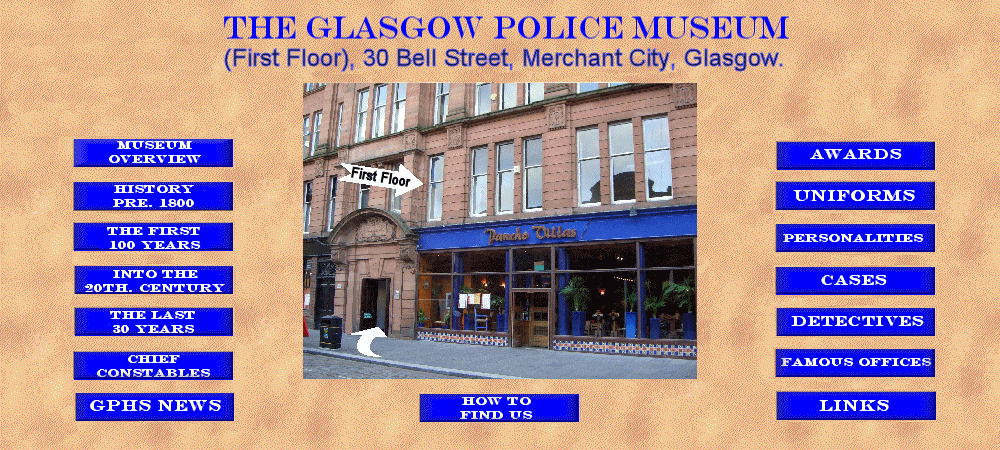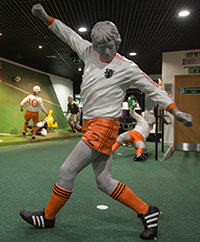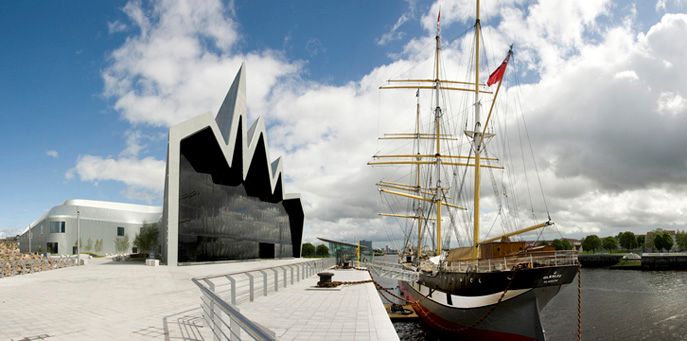Finding the Right Fit: The Size of Cultural Institutions
In this post, I will offer a quick survey of Glaswegian cultural institutions that are small, mid-sized, and large. This will help to highlight the pros and cons of such operations in order to look towards developing a better cultural sector as a part of the #explore1918 project
Finding the Right Fit: The Size of Cultural Institutions

Small Institutions
Small institutions lack space and resources to continue to collect artifacts. While a small institution might be excellent at showing off a small collection, these collections have little room to grow because of the high cost of space. Historical institutions that are small are usually run by passionate individuals who have resources to give including time and money. One example of this is the excellent Police Museum in Glasgow, Scotland. Run by one man, this museum highlights his collection of police memorabilia from all over the world. Although it only exists in a couple rooms of a rented floor, it is expertly curated and enthusiastically upkept. However, there are little resources for outreach and the collections, despite donation offers, have little space to continue to grow.
The website of the police museum shows how small historical institutions can have a big impact.

Mid-sized Institutions
Mid-sized institutions offer greater reach than small institutions but face the middle-child syndrome of the feeling of exclusion. They neither have the financial abilities of the large institution, nor the quaint kitchness of the small institution. The way middle sized institutions can thrive is by playing on their ability to influence the community. Mid-sized institutions might have a more diverse range of professionals. A mid-sized institution might have the budget for librarians or educators. With more professionals, it is possible to reach groups like school children who are unlikely to be reached in small institutions. Still, it is difficult for mid-sized institutions to handle things like special exhibitions. An example of a successful mid-sized institution is the Scottish Football Museum at Hampden Park, Glasgow. It operates with a modest collection of memorabilia and a steady flow of visitors. The focus is highly tailored, like the Police museum, but it is able to promote itself with a national outlook rather than a local outlook like the Police museum.
who wouldn't want to see trophies and statues like these?


Large Institutions
Large Institutions have the most funding to accomplish their goals. Yet, this is not always the best situation as the politics around the money and where it goes can create conflict. Large institutions often have large boards, government ties and local responsibilities. An example of this is the Riverside Museum in Glasgow. Unlike the previous two institutions, the Riverside Museum was designed by a world-renowned architect and cost £74 million to build. With millions of visitors, decisions about the museum take longer and face more oversight than those at the Police Museum or the Football Museum. Additionally, the museum has a much larger staff with a variety of specializations. Whereas a volunteer, often a retired police officer, will stand and chat with people at the Police Museum, the Riverside Museum must have a clear system with admissions prices, operating hours, and tours all standardized by a governing organizations.

You can build really cool things with a really big budget
Conclusions
Obviously, there are many more pros and cons to these three sizes of historical institutions. This post has only suggested some of the many differences that they offer. One thing is for certain though - I thoroughly enjoyed my visit to all three museums when I visited Glasgow last Spring for an academic conference. In such a big world, perhaps we need institutions of all sizes to preserve history for our future generations.
What do you think? What is the right fit for a cultural institution?
100% of the SBD rewards from this #explore1918 post will support the Philadelphia History Initiative @phillyhistory. This crypto-experiment conducted by graduate courses at Temple University's Center for Public History and MLA Program, is exploring history and empowering education. Click here to learn more.
In addition to your qualitative points, can we imagine, and possibly even calculate, the cost of serving a member of the public in these three sizes of institutions? Which is the most economical? What other ways can we access the differences and perhaps decide if there's an ideal institutional size.
Also, I'd like to know more about your observation that "the way middle sized institutions can thrive is by playing on their ability to influence the community. " A deeper discussion of this point, here and perhaps in class, would be interesting.
Congratulations @hourofhistory! You have completed some achievement on Steemit and have been rewarded with new badge(s) :
Click on any badge to view your own Board of Honor on SteemitBoard.
To support your work, I also upvoted your post!
For more information about SteemitBoard, click here
If you no longer want to receive notifications, reply to this comment with the word
STOP